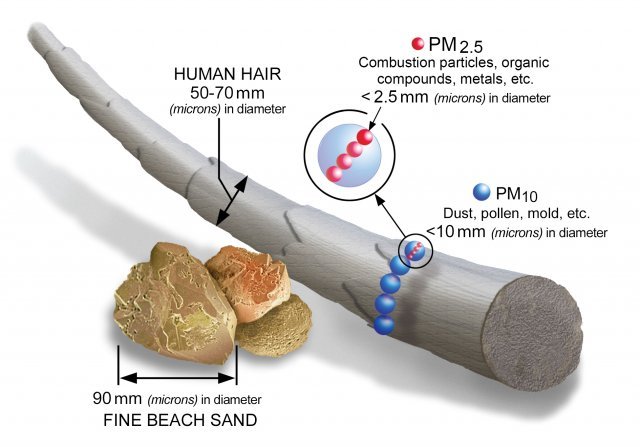When you think of someone with cardiac issues or concerns, you see an older person. You don’t see someone like myself, a person in their mid-twenties with a deliberately active lifestyle, already acutely aware of heart health. But heart conditions can affect anyone. I know this firsthand because of a genetic disorder tied to my French-Canadian ancestry.
My family has lived in the province of Québec since August 11, 1666, when my 9-time great grandfather, Louis Doré, landed on its shores while aboard the Saint-Jean-Baptiste. Over the centuries, a piece of our genetic coding mutated due to extreme weather conditions and poor protection from the elements. Things that kept them alive, such as denser blood and higher cholesterol, are why I’ve been monitored since I was eight.

My personal awareness of heart health may stem from a genetic history, but it has also attuned me to how environmental factors such as nutrition, exercise, mental health, and lifestyle habits affect cardiovascular health.
In recent years, a noticeable and alarming uptick in heart-related issues among young adults has occurred. These aren’t individuals with centuries-old family tales like mine but are young adults and even teenagers who are becoming increasingly susceptible to conditions once largely associated with an older demographic. So for this year’s Heart Health Awareness Month, let’s dive into the role processed foods, climate change, COVID-19, and vaping play in this alarming change.
Heart Attacks Are Aging Down
A 2019 American College of Cardiology study reported that among young heart attack victims, 1 out of 5 is 40 or younger. Between 2000 and 2016, this proportion has been increasing, with a consistent 2% rise each year for the past decade. This can be attributed to several factors, such as the rise of processed foods high in sugar and unhealthy fats, increased sedentary activities, and climbing obesity rates among young adults—a significant risk factor for heart disease.
Dr. Ron Blankstein, a Brigham and Women’s Hospital preventive cardiologist and associate professor at Harvard Medical School, explained that despite their younger age, these patients were no less likely to confront the same risks of further heart attacks and strokes.

In Worth’s conversation with Dr. John Setaro, associate professor of medicine (cardiology) and director of the cardiovascular disease prevention program at Yale School of Medicine, he agreed that yes, you are no less likely to have a future episode. But added that, “If you have your first heart attack at 35, 36, the argument can be made that you actually have a higher chance of another episode.”
The “argument” that Dr. Setaro is pointing out is based on the main risk factors associated with heart attacks. Typically, the average American who experiences a heart attack has some combination of old age, lower activity level, obesity, genetic predisposition, and type II diabetes. But the key here is old age.
The average age for someone to experience their first heart attack in the U.S. is around 65 years old for men, and 72 for women, as reported by the American Heart Association in 2022. However, instead of viewing this as just their “age,” also look at it as the average length of time it takes one to reach that point of poor health. At least 65 years, not 35.
The likelihood of experiencing another heart attack has been formed around that age demographic, their associated risk factors, and more importantly the time it took to get there. Although no formal studies have yet been done to understand the risk of experiencing another heart attack associated with a younger demographic, the accelerated pace of living in poor health does beg the question if it is a higher risk.
Then came COVID.
Increase of Heart Attack Deaths Due to COVID-19
A 2022 study published in the Journal of Medical Virology explained that although acute myocardial infarction (heart attack) deaths during the pandemic increased across all age groups, the relative increase was most significant for the youngest group. People ages 25 to 44 increased to a predicted mortality rate of 23%–34%, while for the oldest age groups, it increased only to 13-18%. Dr. Susan Cheng, director of the Institute for Research on Healthy Aging in the Department of Cardiology at the Smidt Heart Institute and co-author of the study, noted that the rise in heart attack deaths in the younger population was “more than coincidental.”
Furthermore, the study reported that by the second year of the pandemic, the overall predicted rates of deaths due to heart attack had increased by 29.9% for adults ages 25-44. Meanwhile, raised by only 19.6% for adults ages 45-64, and 13.7% for adults ages 65 and older.
Dr. Yee Hui Yeo, a resident doctor at Cedars-Sinai Medical Center and co-author of the study, provided two possible hypotheses as to why.
- Contracting COVID-19 may trigger or accelerate the presentation of preexisting coronary artery disease, even in younger adults.
- Psychological and social challenges associated with the pandemic can cause acute or chronic stress, leading to cardiac disease.
Not to mention the rise of vaping in young adults. Early evidence suggests that vaping might increase the risk of heart disease, although the long-term effects remain unclear. A 2019 study in the journal Cardiovascular Research found that e-cigarette users had patterns of DNA damage in their blood consistent with an increased risk of cardiovascular disease.
Lifestyle Factors & Climate Change
“Vaping,” began Dr. Setaro, “was originally marketed as the safe alternative to cigarettes because you weren’t smoking tobacco. But it turns out it is just as bad as smoking a cigarette we’ve found. Not because of the nicotine, however. Nicotine is no more than a mild stimulant like caffeine. But just like a cigarette, the problem is with nicotine’s vehicle. With vaping, you’re just swapping out the tobacco.”
But vaping isn’t the only “inhalent” that can have an effect on heart health. With climate change comes air pollution—more specifically an increased concentration of PM2.5.
PM2.5 as defined by the Environmental Protection Agency, “are fine inhalable particles, with diameters that are generally 2.5 micrometers and smaller.” PM stands for “particulate matter” or “particle pollution.” Particulate matter is “a mixture of solid particles and liquid droplets found in the air. Some particles, such as dust, dirt, soot, or smoke, are large or dark enough to be seen with the naked eye. Others are so small they can only be detected using an electron microscope.”
What makes PM2.5 particularly concerning is the fact that they are 2.5 micrometers at their largest. To give you an idea of just how small that is, a piece of hair from your head is measured at a diameter of 70 micrometers. PM2.5 is at least 28 times smaller.

The British Heart Foundation reported in 2022 that the most common air pollutants include: “Gases such as nitrogen dioxide, ozone, sulfur dioxide, and carbon monoxide. And particles such as soot and dust.”
Inhaling high amounts of PM2.5 and PM10, as detailed by the British Heart Foundation and Dr. Setaro, can narrow and harden your blood vessels. This makes your blood more likely to clot, increases your blood pressure, and adds strain to your heart muscle as it has to work much harder to compensate for the fact that your blood cannot flow properly.
The Journal of the American Heart Association reported just this past August that “deaths and disability from cardiovascular disease linked to small particles of air pollution rose by about a third worldwide between 1990 and 2019. […] deaths increased from 2.6 million in 1990 to 3.5 million in 2019.” The study cited that particulate matter, PMs, are the most important “environmental risk factor for global cardiovascular disease mortality and disability.”
Proactive Steps to Protect Yourself
So, what can be done? There are actionable steps you, or anyone, can take. It all comes down to gathering information and determination.
“There is an unbelievable amount of research that needs to be done,” noted Dr. Setaro, “to understand the full extent of climate change’s effects on cardiovascular health.” But the “amount” shouldn’t be a deterrent. What needs to be done is to apply the same method as displayed by Rachel Carson when she published Silent Spring in 1962. “She researched DDT to its fullest extent to not only understand its effects but also what needed to be done,” Dr. Setaro pointed out. “Then she effectively dispersed the information globally and got it banned. We need to do the same.”
On the global stage, a practical plan needs to be put together to understand the full effect of air pollution on the cardiovascular system—and what can be done to reverse it. But when it comes to you as an individual, you can take control by gathering information to see where you stand today.
Speak to your doctor about the possibility of getting a blood panel. See your numbers, understand where they need to be, and create a plan. Ask your loved ones, if possible, about family history of cardiovascular disease, and other vascular issues. If yes, question whether it was brought on by genetic predisposition or lifestyle habits. If you vape and or smoke, consider the journey towards quitting. Address your mental health. It is becoming increasingly evident that mental and heart health go hand in hand.
Yes, the issue is multifaceted—but that doesn’t mean it’s complicated. Heart health isn’t an isolated issue, it’s interconnected with our genetic makeup, daily habits, environment, and mental well-being. Proactive health choices and the power of awareness are the tools at our disposal to reduce the increase of heart problems in young adults.











